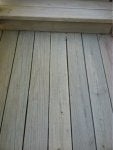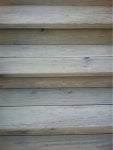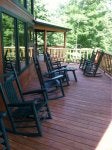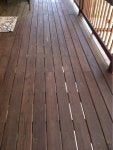Hello,
I'm getting estimates to have my new deck stained. I've found that different contractors are offering different techniques.
For instance, one said he brushes the railings and rolls the floor. The other said he uses a spray gun and sprays the whole thing. Both will clean / sand first.
When questioned, the spray guy swore by the technique and offers a one-year warranty even though the stain is rated for 4. The other guy offered a 1 year warranty as well.
The spray guy recommended Flood CWF brand, but will use any brand I want, the brush / roll guy only uses Cabot brand.
Looking online, I've found mixed reviews on each technique - the spray guy was a little cheaper by $300. Does anyone have any experience with this?
I'm getting estimates to have my new deck stained. I've found that different contractors are offering different techniques.
For instance, one said he brushes the railings and rolls the floor. The other said he uses a spray gun and sprays the whole thing. Both will clean / sand first.
When questioned, the spray guy swore by the technique and offers a one-year warranty even though the stain is rated for 4. The other guy offered a 1 year warranty as well.
The spray guy recommended Flood CWF brand, but will use any brand I want, the brush / roll guy only uses Cabot brand.
Looking online, I've found mixed reviews on each technique - the spray guy was a little cheaper by $300. Does anyone have any experience with this?














